Stonehenge’s Altar Stone did NOT come from Wales: Scientists debunk popular theory and claim the Neolithic slab may have been brought in from Orkney – over 682 miles away
>
Stonehenge was built about 5,000 years ago and has been shrouded in mystery for thousands of years.
But scientists have now come closer to unraveling its secrets, after debunking a centuries-old myth that the Altar Stone came from Wales.
New researchled by Aberystwyth University, analyzed 58 rock samples from across the country to find out where the curious Bronze Age rock could have come from.
Despite its location on the Salisbury Plain in Wiltshire, experts previously believed the Altar Rock came from there Mynydd Preseli in West Wales, because of its ‘exotic’ character.
However, scientists have now turned their attention to the Midlands and perhaps even Scotland, believing the six-ton monolith may have been transported hundreds of miles.
The Stonehenge altar stone could have come from the Midlands or even Scotland, experts say
‘For the past hundred years, the Stonehenge altar stone has been thought to have originated from the Old Red Sandstone (ORS) sequences of South Wales, in the Anglo-Welsh Basin, although no specific source location has been identified,’ the scientists say. .
‘We have concluded that the Altar Stone does not in fact appear to have originated from the ORS of the Anglo-Welsh Basin and further propose that the Altar Stone should no longer be included in the ‘bluestone’ group of rocks mainly derived of the Mynydd Preseli.
‘Attention will now turn to the ORS of the Midland Valley and Orcadian Basins in Scotland, as well as the Permian-Triassic in northern England to determine whether any of these sandstones have mineralogy and geochemistry consistent with the Stonehenge Altarstone.’
Stonehenge’s most prominent slabs – the sandstone sarsens – were sourced locally from Marlborough Downs, just 20 miles from the monument’s site.
But the origins of the Altar Stone – partially hidden beneath two fallen columns – have been at the center of the mystery for centuries.
Previous research suggests its geology is in complete contrast to rocks found in Wiltshire, which may have come from a quarry 140 miles away.
This site in Wales is home to several other ‘bluestones’, such as the Altar Stone, which is formed when lava cools before crystallizing and solidifying.
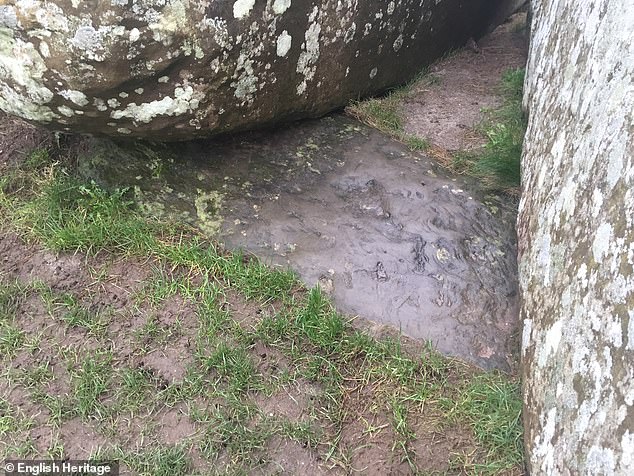
Made from a geologically younger, mica-rich sandstone, the Altar Stone – or ‘Stone 80’ – is a flat-lying, 2 meter wide block believed to weigh around six tonnes and currently partially hidden beneath two fallen sarsen. stones, depicted
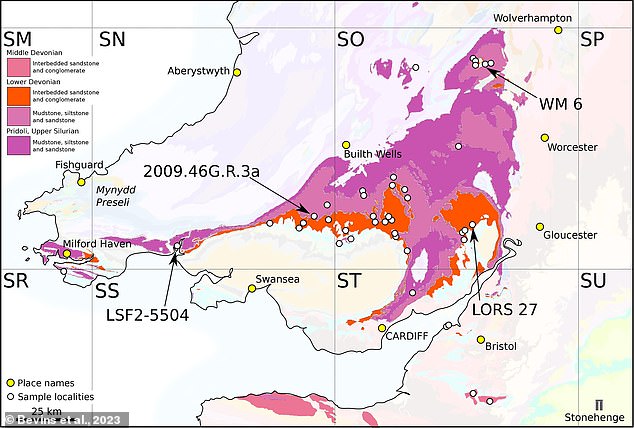
Location map for the 58 samples analyzed in this study, sources from South Wales, the Welsh Borders, the West Midlands and Somerset
But new research suggests that the so-called ‘Stone 80’ should be ‘declassified’ as a bluestone due to its unique properties.
After conducting 106 analyses, experts say the Altar Stone has an unusually high barium content.
This corresponded to just one sample taken from rocks in South Wales, the Welsh Borders, the West Midlands and Somerset.
Now the team has extended their search for the source to northern Britain, hoping to find similar geology in Caithness and even Orkney, Scotland.
If it came from Orkney, ancient builders may have dragged the six-ton rock some 700 miles.
This took place thousands of years before heavy lifting equipment was even invented.
“Monolites used in the construction of stone circles are usually locally sourced,” scientists added.
‘It is the long-distance transport of the bluestone that makes Stonehenge particularly interesting.
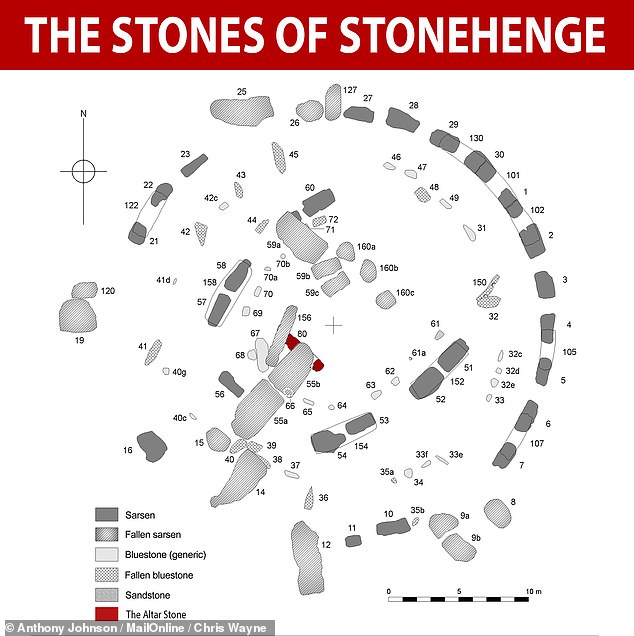
Stonehenge, built around 3,000–2,000 BC, contains several rock groups: the green-gray ‘sarsens’, the so-called ‘bluestones’ and the purple-green ‘Altar Stone’ (shown in red)
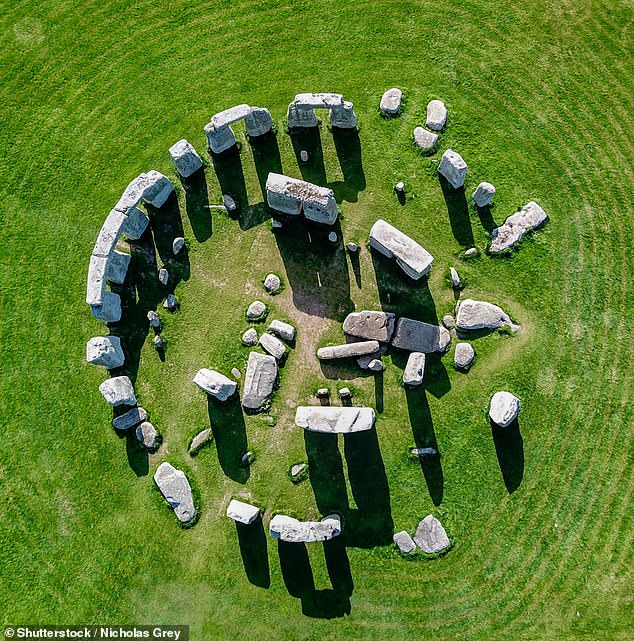
The sandstone sarsens – Stonehenge’s most prominent slabs – were sourced locally from Marlborough Downs, just 20 miles from the monument’s site. Less obvious, however, is the provenance of the so-called ‘bluestones’ – a loose term used to refer to all the non-local rocks that make up the rest of the monument. In the photo: Stonehenge, seen from above
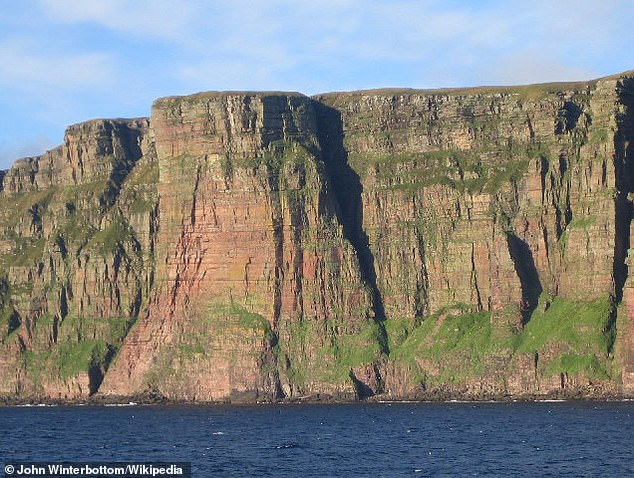
The team has now extended their resource research into northern Britain in the hope of finding similar geology, as far afield as Caithness and even Orkney, Scotland. (Photo: Orcadian Basin at St John’s Head)
‘The bluestones actually represent one of the longest known transport distances from source to monument construction site anywhere in the world.’
Some experts theorize that the Altar Stone was shipped up the Bristol Channel on a raft, before traveling the last part overland to the Salisbury Plain.
However, more recent studies have questioned this and suggest that the rock may have been transported over numerous hills.
The truth of this remains unknown, but MailOnline has been contacted the experts of this study to hear their opinions.
